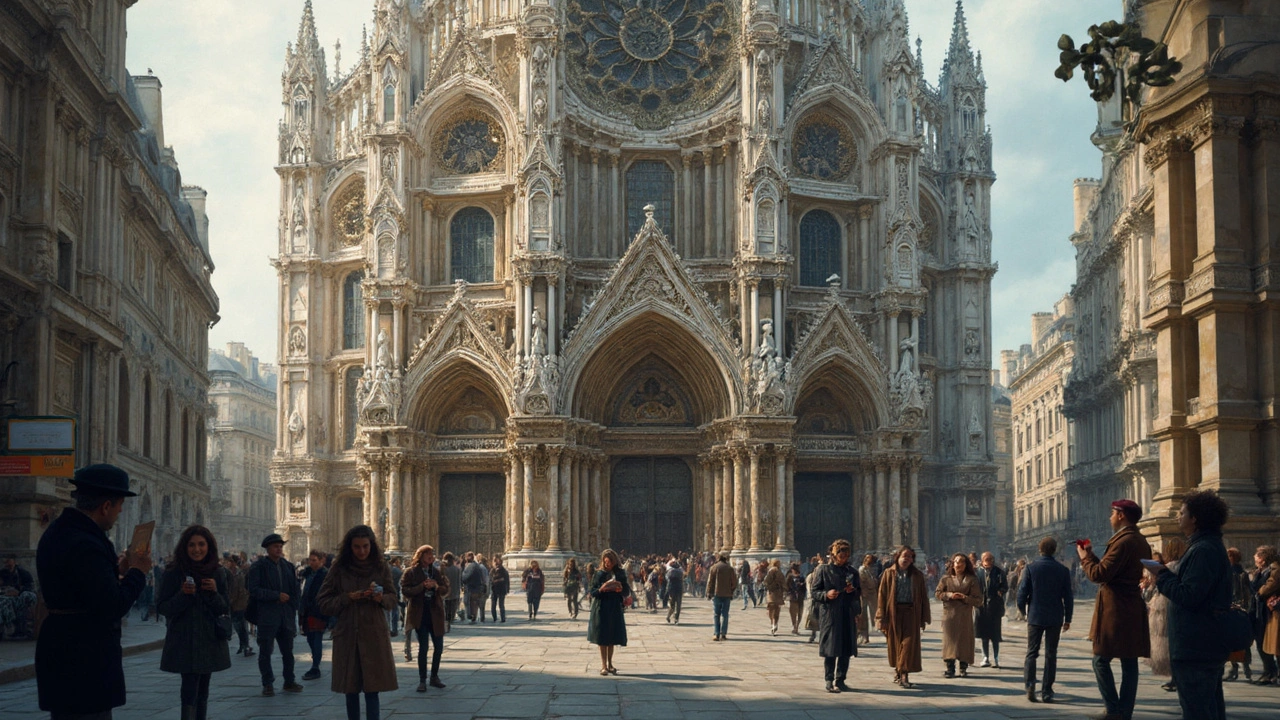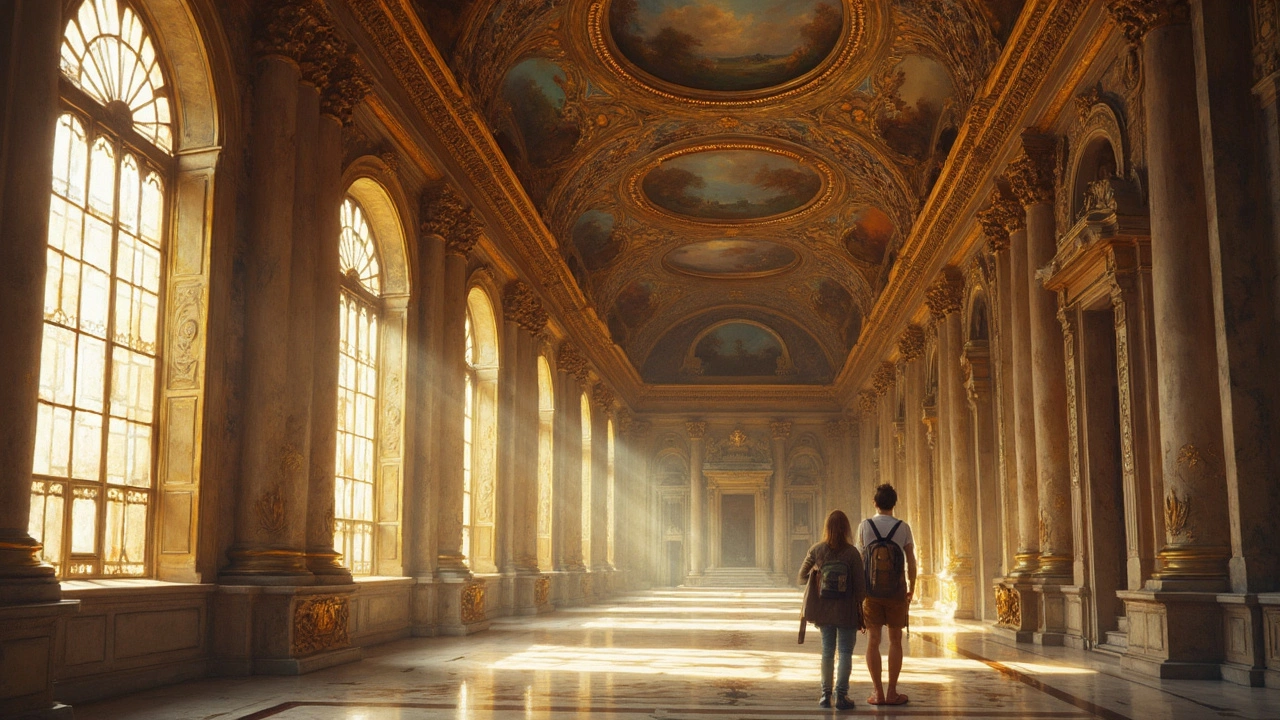Baroque Architecture: The Unforgettable Charm That Changed Cities
 Apr, 28 2025
Apr, 28 2025
Ever walked past a building that basically commands you to stop and look? That’s classic baroque architecture doing its thing. It’s dramatic, over-the-top, and not even a little bit shy about showing off. But what really makes baroque so unforgettable, and why did people go all-in on this style for so long?
If you travel in Europe, or even in some parts of Latin America, you'll run into baroque buildings more often than you’d expect. Churches, squares, palaces—many of them ooze this unique charm that’s kind of hard to explain until you see it for yourself. And for travelers or curious locals, knowing what to look for makes every city stroll more interesting and way more fun.
- Why Baroque Architecture Stands Out
- The Details That Make It Unforgettable
- Where to Find Jaw-Dropping Baroque Buildings
- Tips for Spotting Authentic Baroque Style
Why Baroque Architecture Stands Out
You can't help but notice baroque architecture when you see it. It’s not just another blocky old building. The whole point of baroque was to grab attention, make people feel something, and show off money and power. It popped up in the 1600s when the Catholic Church wanted to wow people after the drama of the Protestant Reformation. That’s why so many baroque churches look like something out of a movie—they’re supposed to impress, not blend in.
The architects behind baroque style didn’t mess around. They loved curves, big domes, and sweeping staircases. They loaded their buildings with dramatic shapes, crazy-high ceilings, lots of light, and bursts of gold or marble. Baroque buildings were the first to really play with light and shadow, making interiors feel extra dramatic and alive. Walk into one, and you instantly get why people called this style bold and “theatrical.”
Famous examples? St. Peter’s Basilica in Rome is a masterclass. Its designer, Gian Lorenzo Bernini, basically set the bar for the entire style—giant columns, oval plazas, statues everywhere. The Palace of Versailles in France cranks it up even more. Did you know Versailles has more than 2,300 rooms? That’s not just big—it’s showing off.
| Building | Country | Main Feature |
|---|---|---|
| St. Peter’s Basilica | Italy | Largest dome in the world |
| Palace of Versailles | France | Hall of Mirrors, 357 mirrors |
| Catedral de Santiago de Compostela | Spain | Famous baroque façade |
Another reason baroque buildings stand out? They always look like they’re in motion. You’ll spot swirling stairs, over-the-top statues, and bold decorations—even inside. Everything pulls your eye up and around, so you don’t just notice the building; you experience it. That wow-factor is exactly why the baroque style is unforgettable, even centuries later.
The Details That Make It Unforgettable
If there's one thing you can't miss with baroque architecture, it's how bold and eye-catching everything looks. Seriously, the details are loud, proud, and super specific. Big curved forms, huge columns, and playful light-and-shadow tricks—these are the hallmarks that make baroque buildings stand out from other old-school styles.
So, what should you keep an eye out for? Here’s a quick run-down:
- Dramatic Facades: Baroque buildings love their fancy entrances. Expect facades that look like they’re moving, with curves, layered columns, and even statues staring right back at you. Many churches, like Rome’s Sant’Agnese in Agone, have this energetic look.
- Ceiling Frescoes: Inside, baroque style doesn’t chill out at all. Look up—ceilings explode with epic paintings, often showing heavenly scenes. The Church of Gesù in Rome is famous for this, where the artwork almost seems to burst out of the architecture.
- Loads of Ornamentation: Every surface gets some love. Scrolls, angels, twisting columns, gold leaf—if it looks rich and flamboyant, it probably belongs to the baroque world. It wasn’t about blending in, but making a strong statement.
- Light Effects: Architects got creative with windows and lighting, playing with how sunlight hits walls and sculptures at different times of day. It’s not random—every glow and shadow is planned out to give a theatrical vibe.
- Huge Scale: Baroque doesn’t do subtle. These buildings are usually massive, meant to impress and even intimidate (think Versailles Palace in France or St. Peter’s Basilica in Italy).
One cool fact: baroque designers liked to break up the typical straight lines you’d see in earlier styles. Instead of plain right angles, you get wavy walls and oval shapes. Bernini, a famous baroque architect, even made an oval piazza outside St. Peter’s Basilica just to keep things interesting.
| Baroque Detail | Why It Stands Out |
|---|---|
| Curved Walls | Add movement and drama |
| Gilded Interiors | Signal wealth and power |
| Grand Staircases | Create a sense of arrival and awe |
The bottom line? When you spot wild curves, gold everywhere, and a bit of architectural attitude, you’re probably looking at real baroque architecture. These details are what make each building unforgettable—and keep visitors snapping photos year after year.

Where to Find Jaw-Dropping Baroque Buildings
If you want to see baroque architecture in all its glory, Europe is pretty much the playground. Cities like Rome, Vienna, and Prague are packed with show-stopping baroque buildings that totally grab your attention. But you can also find cool baroque vibes outside of Europe—in Latin America, for example, thanks to colonial influences.
Let's get specific. In Rome, you can’t really top St. Peter’s Basilica or the Church of Sant’Agnese in Agone. Both are masterpieces loaded with the curves, domes, and detail baroque fans love. Vienna’s Karlskirche is another favorite, with its massive dome and those awesome columns in front. If you head to Prague, the St. Nicholas Church is hard to beat—it’s like a real-life baroque movie set.
Spain’s Salamanca and Seville also show off the style, with places like Plaza Mayor and the Seville Cathedral’s sacristy. And in Latin America, look at the ornate churches in Brazil’s Ouro Preto or Mexico City’s Metropolitan Cathedral. Even the UNESCO calls out these spots for their historic and architectural importance.
“Baroque architecture transforms city streets into living theaters, using drama and boldness to make everyday life feel extraordinary,” says Tom Turner, urban historian at the University of London.
Want some tips for planning a baroque tour? Here’s a quick cheat sheet so you maximize the drama—no matter where you travel:
- Rome: St. Peter’s Basilica, Sant’Agnese in Agone
- Vienna: Karlskirche
- Prague: St. Nicholas Church
- Salamanca: Plaza Mayor
- Ouro Preto, Brazil: Church of São Francisco de Assis
- Mexico City: Metropolitan Cathedral
One interesting stat—Rome alone has over 900 churches, and nearly half show off old-school baroque style, according to a 2023 report by the Italian Ministry of Culture. If you’re a fan of surprise photo ops, pack extra phone storage. These spots guarantee you’ll use it all up.
Tips for Spotting Authentic Baroque Style
Want to tell if that building really rocks the baroque architecture vibe? There are a few clues that’ll help you out fast—even if you’re no expert. Here’s how to know you’re looking at the real deal and not just some wannabe fancy facade.
- Dramatic Shapes: Look for curved walls, twisting columns, and domes that almost look like they’re in motion. Baroque buildings love to bend and show off. St. Peter’s Basilica in Rome? Classic example—those curves are everywhere.
- Wild Decoration: If it looks a little over-the-top, you’re probably looking at baroque style. Expect lots of gold, bold statues, carved angels, flower garlands, and giant, swooping staircases. These buildings say “look at me!”
- Contrast and Light: Baroque isn’t subtle. You’ll usually see strong contrasts between light and shadow. Rounded windows and dramatic lighting effects make everything pop, especially inside huge churches.
- Theatrical Interiors: Walk inside. Unless it’s super simple, you’re probably seeing baroque. Think painted ceilings so detailed it feels like the walls might come alive, and side chapels packed with artwork and colored marble.
Some of the world’s best-known baroque buildings also gather huge crowds—no accident. Here’s some quick data:
| City | Famous Baroque Building | Annual Visitors |
|---|---|---|
| Rome | St. Peter’s Basilica | Over 7 million |
| Vienna | Schönbrunn Palace | 5 million |
| Prague | St. Nicholas Church | 1 million |
Quick tip: Watch for buildings from the late 1600s through the 1700s. Bonus points if you spot a structure with a fancy, oval-shaped plaza out front—baroque architects loved to plan dramatic entrances that make you feel tiny.
If you’re snapping photos or just want to impress your travel buddies, point out those wild curves, oversized doorways, and all the flashy gold. Once you know these signs, you’ll spot baroque buildings everywhere.